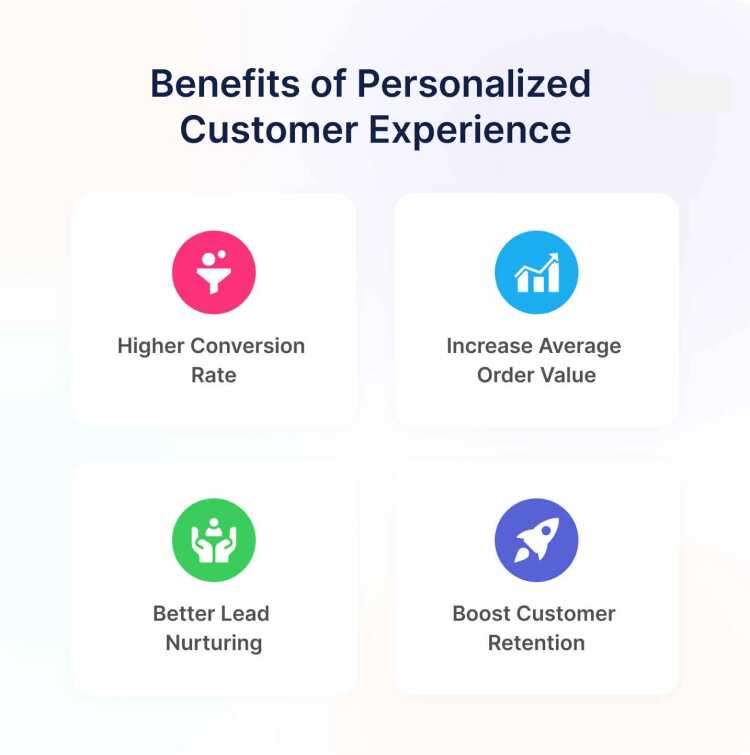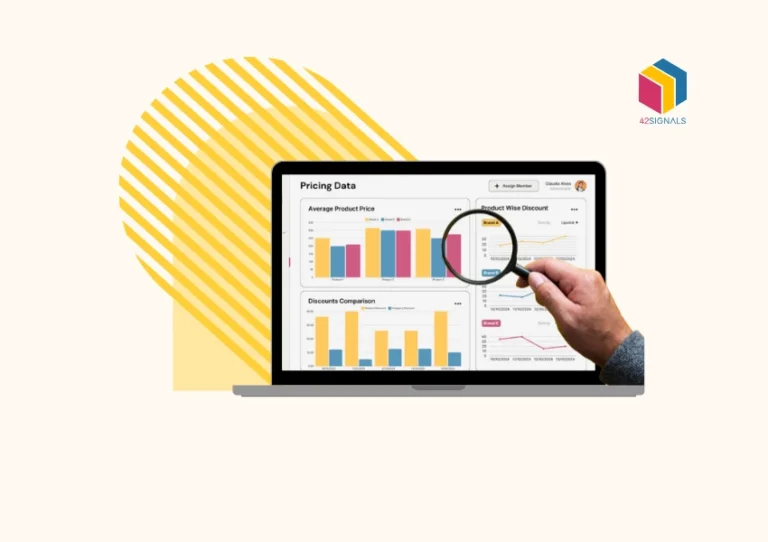Understanding how products resonate with people and tracking their interactions is more essential than ever for companies today. Brands strive to make smarter choices about how they shape their products, and to do this, they need insights that dig deep into the actual ways people use and react to those products. Product analytics has become a crucial tool, offering insights that fuel fresh ideas and smarter design choices, all while helping to create experiences that resonate with customers on a personal level.
This article explores the importance of product analytics, how it enables more thoughtful tracking of product performance and the impact of tools that support this analytical approach.
We’ll also look at how better knowledge of customer behaviors and digital shelf insights can reshape eCommerce, along with how collecting honest customer feedback contributes to higher satisfaction and stronger connections with brands.
What is Product Analytics? Why Does It Matter?

An example of competitor product data from 42Signals
Product analytics involves gathering and examining data related to every step of how customers use and connect with a product. It’s about more than raw numbers—it’s a way of revealing patterns that tell a story about the experience customers have.
Analytics helps companies break down everything from basic user interactions to more complex behavioral trends that reveal why certain features stand out and why others might miss the mark.

Image Source: KMS Solutions
For eCommerce companies, this approach extends to analyzing factors like the point at which customers leave a product page or fail to complete a purchase, helping them shape experiences that cater to how people actually shop.
By relying on these insights, companies can learn what customers want and expect, allowing them to make decisions that better match those needs.
Modern product analytics tools make this process straightforward, transforming raw information into meaningful insights that guide real-time changes, keeping products aligned with what customers want, and fostering continuous improvement.
How Product Analytics Sparks Product Innovation?
Creating unique, helpful products requires a deep look into how customers experience every element of that product.
Product analytics provides the framework needed for companies to pinpoint where they should concentrate their energy and resources, encouraging ideas that are practical and impactful.
Here’s how product analytics supports a cycle of constant innovation:
1. Highlighting Opportunities for Feature Improvements
Product analytics tools allow companies to monitor every feature’s performance, revealing which ones attract users and which don’t get much attention.

This insight enables product teams to invest in enhancing the features that customers appreciate or to rethink those that aren’t fulfilling their purpose.
For instance, if analytics shows that a specific feature has low engagement, product designers can decide to either refine that feature for better usability or use resources to expand areas of the product that are already popular.
2. Anticipating Customer Needs with Predictive Data
One of the most valuable aspects of product analytics is the ability to predict what customers might want next, based on current trends and past behaviors.
This could mean noticing a growing interest in a certain product type or feature set and adjusting offerings to meet that interest.
For an eCommerce business, this insight might involve adding specific products to meet a seasonal trend. Companies can use analytics to make forward-thinking adjustments that cater to customer preferences, allowing them to stay relevant and responsive.
3. Following Market Trends with Digital Shelf Analysis
Digital shelf analytics provides insights into how a product performs across different online marketplaces by tracking everything from how often it appears in searches to its click-through rate.

Understanding these patterns enables businesses to adapt their products to fit what customers are searching for, particularly in fast-moving eCommerce spaces.
By observing trends that influence customer buying decisions, companies can refine their products, making them more visible and appealing to the people most likely to purchase them.
4. Encouraging Experimentation and Quick Adaptation
Using product analytics enables rapid testing of ideas.
When companies can test various versions of a product feature and measure user responses, they gain a clear view of what sticks and what doesn’t.
This ability to quickly test and refine ideas keeps development flexible, allowing companies to keep up with customer feedback and make adjustments as they go, rather than waiting for major release cycles to address issues.
How to Enhance Customer Experience through Product Analytics?
Beyond boosting product innovation, product analytics helps companies improve every step of the customer experience, a key factor in building customer loyalty and positive brand relationships.
Here’s how it can be a game-changer for customer satisfaction:
1. Listening to Customer Feedback through Voice of Customer Analytics
Voice of Customer (VoC) analytics gathers direct feedback from customers, helping companies better understand their preferences, frustrations, and expectations.

When brands consider this feedback, they can make meaningful adjustments based on real experiences, directly improving how customers feel about their interactions with the product.
VoC can highlight issues such as a complex checkout process or difficulties in product usage, helping companies make changes that lead to smoother, more satisfying experiences.
2. Making the Customer Journey Smoother and More Intuitive
Product analytics maps every interaction customers have with a product, from initial exploration to post-purchase engagement.
This level of tracking reveals potential barriers within the customer journey, providing a chance to fix those friction points before they lead to lost sales.
For instance, by observing where users exit during the checkout process, an eCommerce brand can redesign this step to encourage higher conversion rates. Understanding each step of the journey allows companies to design experiences that feel natural and help customers move effortlessly toward their goals.
3. Personalizing Experiences for Stronger Connections
Today’s customers expect a certain degree of personalization in how they interact with brands. Product analytics helps companies customize the experience to match each user’s unique preferences and behaviors.

Image Source: Reve Chat
For example, analyzing performance metrics might show that a certain user group prefers a specific feature layout or style.
Using this knowledge, brands can offer a more tailored experience, making interactions feel meaningful and relevant to each user’s needs.
When customers feel that a brand understands their individual preferences, they’re more likely to stick around.
How Product Analytics Tools Turn Data into Actionable Insights?
Product analytics tools are essential for translating large sets of data into digestible and actionable insights.
Popular tools like 42Signals, Mixpanel, and Google Analytics give businesses the ability to track performance, customer engagement, and more, helping them create focused strategies.
These tools offer dashboards, reporting features, and options to segment users, giving companies a complete picture of what’s working and where improvements are needed.
Investing in the right analytics tools allows companies to not only capture and interpret data but also to respond more quickly to shifts in customer behaviors and preferences. With the right tools in place, brands are equipped to make informed choices that keep them relevant and competitive.
How Customer Insights Fuel eCommerce Optimization Strategies?
In eCommerce, understanding customer actions is vital for making smart adjustments that improve product offerings and sales. Product analytics provides a detailed look into how customers interact with product pages, which informs key business decisions. Here are a few ways that insights into customer behavior can fuel smarter strategies in eCommerce:
1. Improving the Product Page Layout and Content
Analytics helps reveal the effectiveness of product pages by tracking factors like the number of clicks, time spent on the page, and add-to-cart actions. Using this information, eCommerce businesses can improve elements like product descriptions, images, and calls to action, capturing customer interest more effectively.
2. Reducing Abandoned Carts
Cart abandonment is a common problem in eCommerce, and understanding why customers leave without completing a purchase can lead to positive changes. Product analytics can highlight factors such as high shipping costs or confusing checkout steps that might cause customers to abandon their carts. Businesses can use these insights to refine the checkout process, encouraging more customers to complete their purchases.
3. Boosting Cross-Selling and Upselling
By analyzing customer data, companies can identify patterns that suggest opportunities for recommending additional or related products. If analytics show that customers who buy a particular item often pair it with another, businesses can promote these products together or create special offers, encouraging more sales.
How Product Analytics Powers Long-Term Growth Strategies?
For companies that want to grow steadily over time, product analytics is a valuable resource. It enables leaders to make decisions based on solid data, enhancing both current offerings and future plans.
Tracking product performance, analyzing customer behavior, and listening to the voice of the customer help brands build products that people actually enjoy and use.
As digital competition continues to intensify, adopting a clear and focused approach to product analytics is more than a good idea; it’s a necessity.
By integrating product analytics into daily operations, companies can stay responsive and competitive, continuously refining their products to match the needs of a changing market.
Conclusion:
Product analytics is a powerful tool for companies that want to stay relevant and connected with their customers.
By tracking what works, studying customer actions, and paying attention to honest feedback, companies can create products that are in line with real user needs and expectations.If you’re interested in an product analytics service for your business that can be completely customized, schedule a demo with us today.







